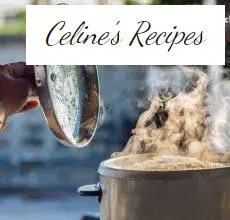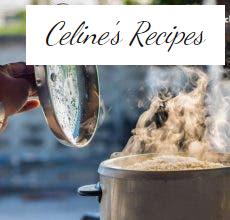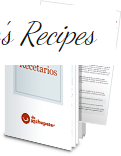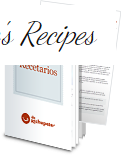 A few weeks ago I received a call from Ramón, do you want to see Norwegian salmon in Stavanger? A question with a clear answer, Yes .
A few weeks ago I received a call from Ramón, do you want to see Norwegian salmon in Stavanger? A question with a clear answer, Yes .
Every year in summer we try to do some vacation trip that has gastronomic added value, two years ago we were in Norway, we visited the Norwegian Fjords, we saw waterfalls, rivers, the Norwegian Sea at its best, small towns, large and like Bergen and a capital that surprised me a lot, Oslo. A modern, clean, multicultural city with great night and day life.
The failure of the trip was that although we were willing to try its gastronomy we stayed in the typical, cooked salmon (yes, at its point) with mashed potatoes with dill and lots of butter, low-cooked fresh cod with grilled vegetables, salmon smoked with a different flavor than that found in Spain (in Stavanger I knew why), some sandwiches with Norwegian fish, of course, we tried whale and some seafood skewers in the port of Bergen watching the sea, which is priceless and for the first time in my life I ate moose.
They don’t just have fish. Desserts and fruit were really impressive. It caught my attention that the strawberries were from there and that they were so tasty.
Alicia Romero, a high school classmate in Ourense, has made her life there and recommended us a bit regarding clothing and what time she was going to do. I can assure you that in August we reached almost 26 degrees, we were going to visit in shorts and flip flops, as if I were in Spain. In fact, in Galicia that year you couldn’t take off your jersey … things about climate change. A country that you must not stop visiting, one of the best secrets kept by its people, little by little this is changing and tourism is an important source of income in the country.
From Norge (Norwegian Seafood Council) we were invited to get to know their gastronomy first hand thanks to chefs Danièl Rougè Madsen and Adam Schive Bjerck, their Norwegian salmon, how a salmon farm works in the Stavanger area and all the process from when the roe is raised until it is packaged for later consumption. Well, I came freaking out, I am honest, everything that the previous trip to Norway had not brought me in the field of gastronomy was fully completed in this press trip.
This is the first of three posts in which I will explain in detail everything I experienced in those days. I hope to transmit it with the same passion that the Norwegians talk about their products, a passion supported by a country that is dedicated to making everyone know the quality of its gastronomy.
For example, with the participation of Norway for several years in the Bocuse d’Or contest, its preparation, its institutional support and the team formed to make its dishes the launch of its gastronomy to the world.
In the summary of photos you have just seen you can see that one of the days we spent at the Norwegian Culinary Institute where they have all the weapons to research and improve Norwegian recipes, at the hands of two of their most outstanding chefs Danièl Rougè Madsen and Adam Schive Bjerck were able to learn a secret about cooking methods and how to prepare traditional dishes with Norwegian seafood.
The way in which Norwegian fish is processed and prepared and the accompanying ingredients. One concept that surprised me is that they take the Bocuse d’Or contest as a shuttle to their products and that around this contest they form a team that supports each year so that the preparation is better and the chances of winning are much higher.
Everything is designed so that Norway is among the best in this contest in which in Spain we do not give it much importance (which I think will be because we have never won it … Spain came in 17th place behind China and Italy). Scandinavia has got the hang of it and in 2011 it was crowned queen of world gastronomy, Denmark, Sweden and Norway respectively earned the Bocuse d’Or gold, silver and bronze trophies. Awesome.
Although I believe it after seeing in Norway an identical replica of the booth where they have to prepare the recipes for the contest, a small space to accustom their chefs to work in the same conditions that they will have in the contest.
The Bocuse d’Or forces candidates to prepare a meat and fish dish with predetermined ingredients that change every year, in Norway the representatives have to go through arduous regional selections, which is why their presence at the Bocuse d ‘ Or is already considered a great professional merit.
The secret is that the prestigious chefs in Norway always support their colleagues, since they have a “national” concept of the contest, more than personal. The main key to success is teamwork, among Norwegian chefs, collaborators and sponsors, including Norge, who perfectly assume their role, and their work within the team.
Chef Danièl Rougè Madsen prepared a master class for us in which he explained the different types of cut of salmon and cod. The most curious for me was the salmon.
Ways to cut salmon
- We start with the fish very clean and the scales removed.
- The cut begins at the height of the salmon’s head. We introduce until we reach the fish bone.
- Fillet the fish from head to tail passing the knife flush with the thorn.
- We clean the belly well, removing the vitelial tissue and the belly bones using the tip of a knife to lift and remove them.
- We remove the fatty part from the bottom of the belly.
- To remove the excess spines (intramuscular spines) along the central part of the piece), lightly scrape with the knife until the spines are visible. With the help of a pliers or a clamp we can extract all the intramuscular spines.
- We get a clean piece of salmon.
Loin Cut
- This cut is recommended for the high back part and the belly. To obtain a piece of a portion approx. 150 / 200gr we make a cross section with a thickness of 2-3 fingers. This cut can be cooked with skin if we have previously removed the scales well. If this is not the case, we remove the skin.
Butterfly Cut
- This cut is recommended for the high back part and the belly of the piece.
- We cut a piece of salmon loin. We make cross cuts twice the desired width. Without cutting the skin, we make an insert in half crosswise. Using the skin as a connecting element, we “open” and form the butterfly.
- Tips for cuts that require the skin to be removed: Wet the knife so that the knife does not stick when separating the skin from the meat and we do not cut with the knife but pull the skin leaving the knife fixed.
Fillet cut
- This cut is recommended for the center of the piece and the tail.
- This cross section is always made without skin. We make the cut in half to fillet in 2-3 parts, depending on the thickness of the piece.
Taco Cut
- This cut is recommended for the center of the piece and the tail.
- We make cross cuts, to get salmon strips. Cut these strips into blocks, cubes or the desired size.
Minced cut
- Tip: To take advantage of the meat that remains between the bones of the central bone, we scrape with a spoon and remove the meat. We can also chop the meat into small pieces.
In a few days I will present you a recipe with salmon, while I leave you with some photos of Stavanger.
Did you like it? Share it!
Share Tweet Pin it To print
Receive a weekly email with new recipes and yummy recommendations.
Think of Pixels SL as the owner of Recetasderechupete.com, it will use the data you provide in this form only to send you blog updates. We treat your data with respect. For more information see the Privacy Policy . You can change your mind at any time and unsubscribe by clicking on the footer of any email you receive from this website, or by contacting [email protected]. Yummy recipes use Mailchimp as a platform for sending emails. Mailchimp is covered by the EU-US Privacy Shield agreement, approved by the European Data Protection Committee. By submitting this form, you consent to your data being transferred to MailChimp for processing in accordance with its Privacy Policy .
If you liked this article you will like:
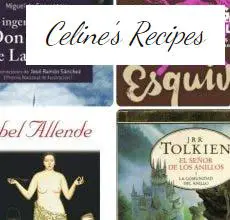
Recipes we owe to literature

Beyond burguer. Vegetable burgers, what’s this all about?
